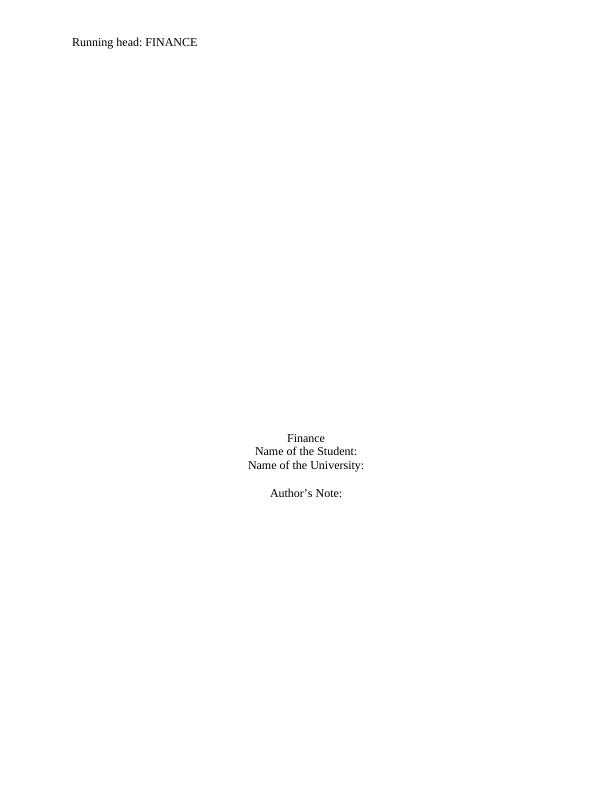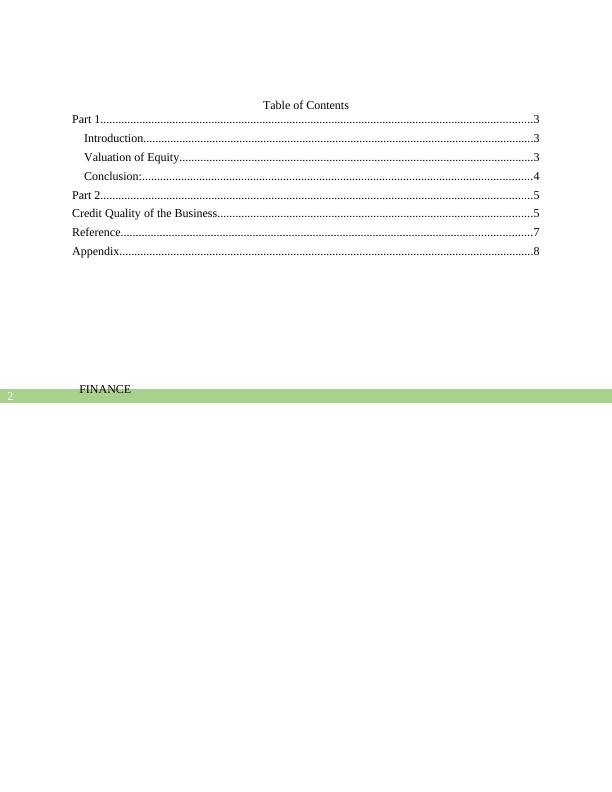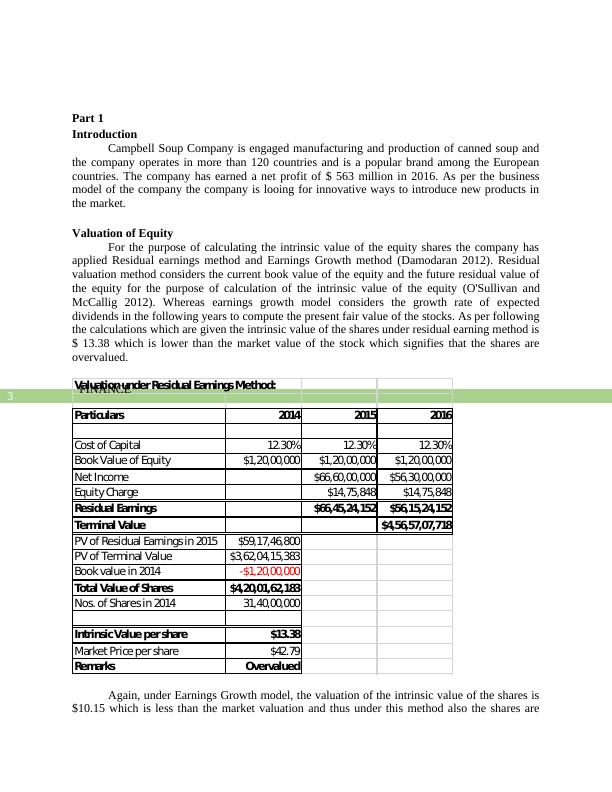Ask a question from expert
Valuation of the Business Using Residual and Earnings Methods
13 Pages1323 Words36 Views
Added on 2021-04-24
About This Document
Residual valuation method considers the current book value of the equity and the future residual value of the equity for the purpose of calculation of the intrinsic value of the equity (O'Sullivan and McCallig 2012). Again, under Earnings Growth model, the valuation of the intrinsic value of the shares is $10.15 which is less than the market valuation and thus under this method also the shares are overvalued in terms of the intrinsic value of the shares calculated (Balachandran and Mohanram 2012).
Valuation of the Business Using Residual and Earnings Methods
Added on 2021-04-24
BookmarkShareRelated Documents
End of preview
Want to access all the pages? Upload your documents or become a member.
Corporate Finance, Excel Calculation and Equity Valuation
|12
|2275
|172
DIVIDEND DISCOUNT MODEL (DDM).
|3
|469
|278
Towngas China Company Limited to find their intrinsic value
|9
|1482
|20
(PDF) The economic effects of capital gains taxation
|10
|2640
|37
Valuation Report of Glaxo Smith Kline Plc Listed on London and New York Stock Exchange
|2
|641
|177
Valuation Methods | Definition | Examples
|9
|1871
|21



